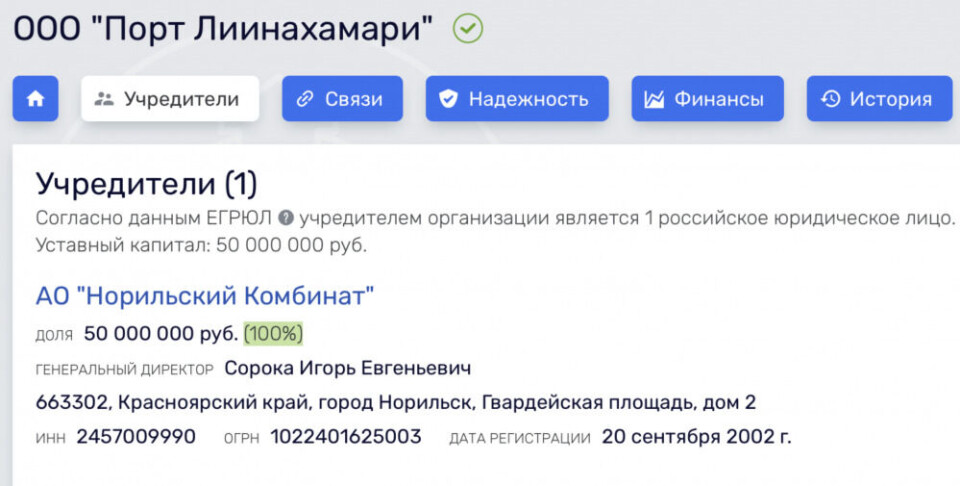
Nornickel debuts in tourism, starts king crab safari in border area to Norway
The Russian mining and metallurgical giant has established a daughter company aimed at boosting tourism as Nornickel within months is closing the smelter in the monotown of Nikel.
“Port Liinaharmari” is registered with a capital of 50 million rubles and is a 100% owned subsidiary of Nornickel.
The company recently won a bidding competition on the rights for recreation king crab fishing within a dedicated area west of the Pechenga fjord off the coast of the Kola Peninsula.
The exclusive right is for a ten-year period, according to the announcement by the Northern Seas Territorial Administration of the Federal Agency for Fisheries.
A challenge, though, is that the dedicated area licensed for King Crab fishing is within the restricted border zone, about 15 kilometers from Russia’s border to Norway.
According to a recently published map made in cooperation between Murmansk regional authorities, the Union of tourism industry and FSB Border Directorate, the area on the western shores of Pechenga Bay is restricted border zone, but with possibilities for foreign tourists to visit with special permission.
“To obtain a special permit to enter the territory for a regulated visit, foreign citizens must, at least 45 days before the visit, send a written application,” states the instructions published by the government of the Murmansk region.

The Barents Sea coast of the Kola Peninsula is the most militarized area in the Russian north with naval bases in nearly all fjords from the Fishermen Peninsula to the Kola Bay.
Blogger51 in Murmansk was first to report about the king crab bidding completion at four spots inside the 12 nautical miles zone off the western coast of the Kola Peninsula.
Nornickel and Murmansk authorities signed an agreement in 2019 on how to develop new businesses in the Pechenga region as the smelter in Nikel will be closed. Part of the plan includes development of a tourism cluster.

“Port Liinahamari” is now given priority, said Deputy Governor of Murmansk region, Olga Kuznetsova, interviewed by TV21.
“It provides for the development of more than nature and ecological tourism, but also includes plans to create necessary infrastructure for cruise ships, yachts, diving, sea fishing and other types of tourism,” she said.
Kuznetsova has a background from Nornickel.

According to TV21, legal issues with the border guards and the ministry of defence have to be resolved, but the regional authorities are confident in success.
The Pechenga Bay is deep and does not freeze in winter. When the area belonged to Finland in the mid-war period, there was hectic activity in the port of Liinakhamari as Finnish industry in the area used the fjord for export of ores from the nearby rich nickel mines.
During the war, Nazi occupiers built large fortification facilities in the fjord and depended on those same terminal facilities in Liinakhamari for nickel shipments to war factories in Germany.
When the Soviet Union annexed the area after WW2, the fjord was used by the Northern Fleet that established a naval base on site. Later, Liinakhamari housed a fleet of coastguard vessels.
Today, the Northern Fleet is actively operating in the Pechenga Bay, including exercising landing operations with amphibious vehicles. The 200th Separate Motor Rifle Brigade has several units near the shores, including a shooting range.

















